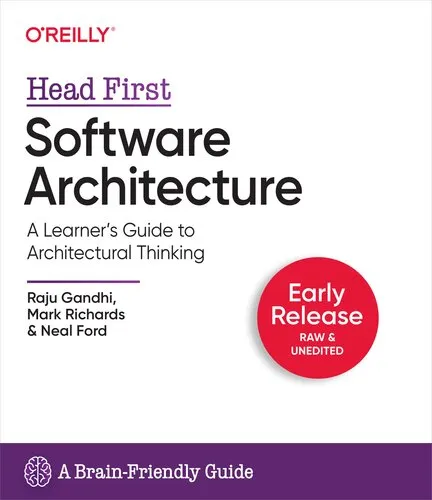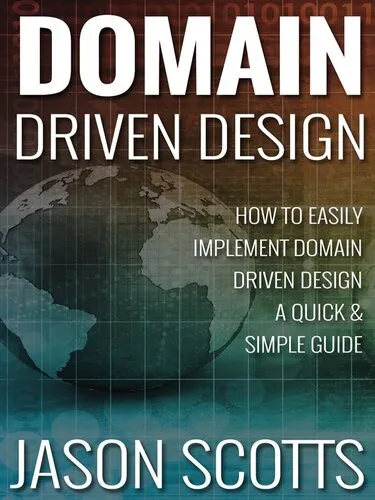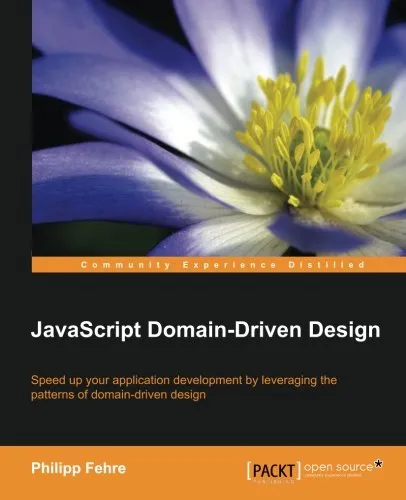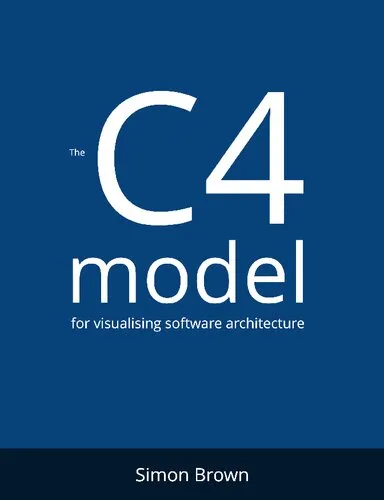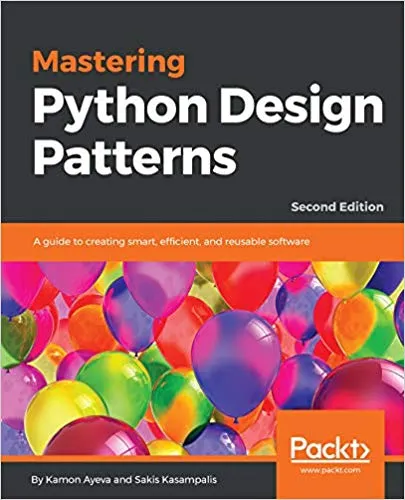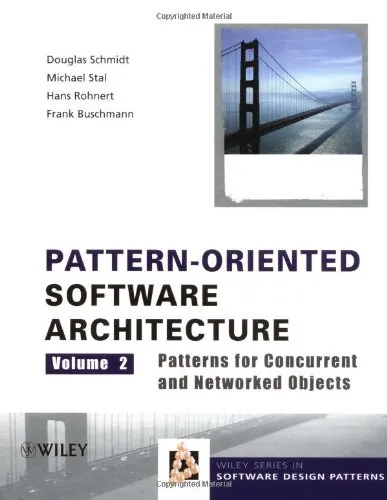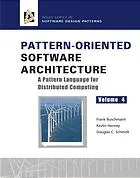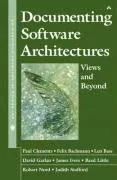Building Evolutionary Architectures: Automated Software Governance
3.8
بر اساس نظر کاربران

شما میتونید سوالاتتون در باره کتاب رو از هوش مصنوعیش بعد از ورود بپرسید
هر دانلود یا پرسش از هوش مصنوعی 2 امتیاز لازم دارد، برای بدست آوردن امتیاز رایگان، به صفحه ی راهنمای امتیازات سر بزنید و یک سری کار ارزشمند انجام بدینکتاب های مرتبط:
Persian Summary
معرفی کلی کتاب
کتاب 'Building Evolutionary Architectures: Automated Software Governance' نوشته نیل فورد، ربکا پارسونز، پاتریک کوآ و پرامود سادالاج، راهنمایی جامع و عملی برای توسعه و ارتقاء سیستمهای نرمافزاری با استفاده از روشهای مدرن و خودکار ارائه میدهد. این کتاب با تمرکز بر نرمافزارهای تکاملی، راهحلهایی برای مدیریت خودکار فرآیندهای نرمافزاری فراهم میکند و روشهای اندازهگیری و ارتقاء کیفیت ساختاری را بررسی میکند.
خلاصهای از کتاب
در دنیای توسعه نرمافزار، مفهوم معماریهای تکاملی به عنوان راهحلی برای چالشهای پیچیده برنامهنویسی مورد توجه قرار گرفتهاند. این کتاب به خوانندگان کمک میکند تا درک عمیقی از نیاز به معماریهای نرمافزاری که قابلیت تغییر و ارتقاء دارند، پیدا کنند. نویسندگان با استفاده از تجربیات طولانیمدت خود، به تشریح اصول طراحی، پیادهسازی و هدایت معماریهای تکاملی میپردازند.
مبحث کلیدی دیگری که در این کتاب پوشش داده شده است، 'Automated Software Governance' است که به اهمیت خودکارسازی فرآیندهای مدیریتی در نرمافزار میپردازد. این امر کمک میکند تا تیمهای توسعه به صورت پایدار و انعطافپذیر به تغییرات پاسخ دهند و نوآوری را در محصولات خود حفظ کنند.
نکات کلیدی
- ترکیب Continuous Delivery با معماریهای تکاملی برای بهبود فرآیند توسعه
- روشهای ارزیابی و اجرای Fitness Functions برای ارتقاء کیفیت نرمافزار
- بهبود همکاری تیمی با استفاده از ابزارهای خودکار و روشهای مهندسی نرمافزار مدرن
- نحوه مدیریت وابستگیها و تعاملات پیچیده در سیستمهای توزیعشده
نقلقولهای معروف از کتاب
"تغییر تنها ثابت در دنیای نرمافزار است و طراحی معماریای که به راحتی تغییر کند، حیاتی است."
"خودکارسازی شامل بیش از صرفاً اجرای تستهاست؛ بلعکس، باید به تمام زوایای چرخه عمر نرمافزار تعمیم یابد."
چرا این کتاب مهم است
این کتاب فراتر از ارائه تکنیکهای عملی برای مهندسان نرمافزار است؛ در واقع به عنوان یک منبع استراتژیک برای مدیران و رهبران فناوری اطلاعات تلقی میشود که به دنبال درک بهتر محیطهای پیچیده هستند. دلیل اهمیت این کتاب در توانایی آن در اتصال مفاهیم نظری با پیادهسازیهای عملی و کاربردی در محیطهای واقعی است که درنهایت منجر به ارائه نرمافزاری باکیفیتتر و پایداری بالاتر میشود.
در حالی که فناوری به سرعت در حال تغییر است، این کتاب ابزارها و بینشی را ارائه میدهد که موجب میشود سازمانها بتوانند با این تغییرات هماهنگ شوند و استراتژیهای بهتری برای معماری نرمافزار خود اتخاذ کنند.
Welcome to the dynamic world of software architecture as described in Building Evolutionary Architectures: Automated Software Governance. This book offers a revolutionary perspective on how to adaptively design systems that support continuous change, equipping you with the tools to thrive in a fast-paced technology landscape.
Detailed Summary of the Book
In an era where rapid technological advancements and ever-evolving business needs dictate the pace of change, the ability to create adaptable and resilient software architectures is crucial. This book introduces the concept of evolutionary architecture, a framework that supports guided, incremental change across multiple dimensions.
We begin by exploring the principles of architecture that support evolution. Highlighting crucial components like feedback loops and fitness functions, the authors Neal Ford, Rebecca Parsons, Patrick Kua, and Pramod Sadalage guide you through the practices that ensure your architectural designs can evolve naturally and sustainably over time.
Automated Software Governance forms the backbone of this evolutionary process. The book illustrates how automation can enforce architectural standards, facilitate integration, and streamline compliance without stifling the creative flow of software development. Through real-world examples and in-depth explorations, you learn the significance of integrating automation directly into the developmental pipeline.
Key Takeaways
- Grasp the fundamentals of evolutionary architecture and why they matter in today's agile development ecosystems.
- Understand the critical role of feedback loops and fitness functions in managing architectural changes.
- Learn how automated governance can aid in maintaining compliance and architectural alignment over time.
- Discover effective strategies for integrating automation with minimal disruption to the existing development processes.
- Explore real-world case studies that showcase the successful implementation of evolutionary architectures.
Famous Quotes from the Book
"Evolutionary architectures provide the flexibility to cater to ever-changing needs without necessitating a complete redesign."
"Automated governance is not the enemy of creativity. Rather, it's the best ally in ensuring the integrity and longevity of your systems."
Why This Book Matters
The landscape of software development is in constant flux, influenced by emerging technologies, competitive pressures, and shifting consumer expectations. Traditional architectural practices often fall short in such a dynamic environment. This is where Building Evolutionary Architectures shines, providing you with an actionable framework that brings together automated governance and architectural adaptability.
By adopting the evolutionary strategies outlined in this book, organizations can ensure their systems remain robust, adaptable, and future-proof. The blend of theory and practice makes it an indispensable resource for software architects, developers, and IT leaders alike. Whether you're dealing with legacy systems or building greenfield projects, this book empowers you to navigate complexity with agility and foresight, transforming potential challenges into opportunities for growth.
دانلود رایگان مستقیم
شما میتونید سوالاتتون در باره کتاب رو از هوش مصنوعیش بعد از ورود بپرسید
دسترسی به کتابها از طریق پلتفرمهای قانونی و کتابخانههای عمومی نه تنها از حقوق نویسندگان و ناشران حمایت میکند، بلکه به پایداری فرهنگ کتابخوانی نیز کمک میرساند. پیش از دانلود، لحظهای به بررسی این گزینهها فکر کنید.
این کتاب رو در پلتفرم های دیگه ببینید
WorldCat به شما کمک میکنه تا کتاب ها رو در کتابخانه های سراسر دنیا پیدا کنید
امتیازها، نظرات تخصصی و صحبت ها درباره کتاب را در Goodreads ببینید
کتابهای کمیاب یا دست دوم را در AbeBooks پیدا کنید و بخرید
1668
بازدید3.8
امتیاز0
نظر98%
رضایتنظرات:
3.8
بر اساس 0 نظر کاربران
Questions & Answers
Ask questions about this book or help others by answering
No questions yet. Be the first to ask!


